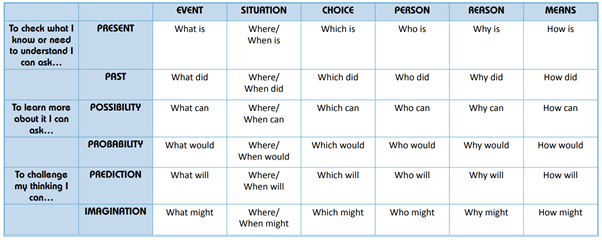Reading can be categorized as online and offline be it reading printed circulars such as magazines, or academic PDFs that you might read for research and insights to help with assignment tasks. Reading is a passive activity to most learners but to maximize learning from the reading context, the reader has to shift to active mode. Annotating the texts whether it is an online article, or a downloadable PDF will help the reader progressively gain confidence with reading a wide range of resources. Some pro-tips on using technology to annotate including on webpages, ebooks and PDFs are shared in this link
The Simple Guide to Annotations: How to Annotate PDFs, Ebooks, Images, and Websites. Source: https://www.makeuseof.com/tag/annotations-guide-and-tools/
The PSB Learning and Resource Centre (LRC) has come up with a few guidelines to assist students to maximize the reading effectiveness on online academic materials such as scholar papers or academic PDFs.
Tip 1: Keep it Simple, Student (KISS) – Stay Focused
As online depository of educational information and academic resources flourish over the past decades, it is highly likely that classes and academic learning materials are circulated to students in the digital format, such as PDFs which may contain interactive information and even hyperlinks to additional resources. Under the KISS concept, we learn to love reading as a depository of information. Below are some attributes of a good reader.
Figure 1: The Behaviours of a Good Reader

Source: Adapted from education.gov.scot, the Teaching Reading Comprehension P5–S3 on 9 February 2021
One recommendation is for readers to first skim generally to gain a quick impression of the information. Decide if the material will be suitable for further scanning to find the relevant information that you might need. Start your first reading attempt, read closely with the aim to understand the context of the information. This is often followed by re-reading and change contexts into short or simpler ideas. If needed, it is recommended for students make notes along the way.
Tip 2: Side Notes can be made whilst reading an academic text
Readers typically make notes whilst reading to summarize the main points of a text which will serve as a useful review tool for assessments or to note down thoughts after reading a passage for particular aspects of the text.
Whilst reading, often the reader will have to focus on the passages or the text. Do minimize distraction. Take breaks after reading a few paragraphs and mentally make a summary liner on what you have read in the areas below. This serves as a refresher later after you complete the entire academic paper reading which might be a few pages and you will have all the necessary information summarized in an organized table below.
| Purpose of the text (Summary) | Evidence (what I understand from the text) | Target audience of the text | How do I apply the facts to support my task? |
Tip 3: Questioning what you have just “read” promotes critical evaluation
Figure 2: The Question Matrix

Source: Adapted from education.gov.scot, the Teaching Reading Comprehension P5–S3 on 9 February 2021
The Question Matrix, designed by Chuck Weiderhold in 1991, contains 36 question starters. Using these starters, it permits the reader to appreciate the context behind the passage as the reader proceeds through the matrix, the questions promote critical evaluation of the materials and its relevance for the academic tasks given.
Concluding remarks
Finally, to demonstrate understanding across different areas of learning and understanding the context of the academic texts. A reader will identify and evaluate the purpose, concerns, reasons or concepts presented from the readings. Learning to make inferences and summarise key pointers as discussed allows the reader to improve with more frequent reading. Do not be afraid of reading, reading can be an enriching experience to broaden your understanding of the discipline you are pursing as a tertiary student being trained in higher education.
Additional resources for annotating reading materials online and offline
- Use annotation and drawing markup tools to add comments in PDFs. Source: https://helpx.adobe.com/acrobat/using/commenting-pdfs.html
- PDFs in Google Classroom: How to annotate with Snap & Read PDF Reader. Source: https://learningtools.donjohnston.com/2020/07/pdfs-in-google-classroom-how-to-annotate-with-snap-read
- Tools for note taking and annotations. Source: https://gouldguides.carleton.edu/c.php?g=147129&p=963781
- Use the Navigation Pane in Microsoft Word. Source: https://support.microsoft.com/en-us/office/use-the-navigation-pane-in-word-394787be-bca7-459b-894e-3f8511515e55
- Zotero tool: Annotate and Highlight on PDFs from Zotero library. Source: https://guides.library.oregonstate.edu/c.php?g=359201&p=2426108
 TOP
TOP